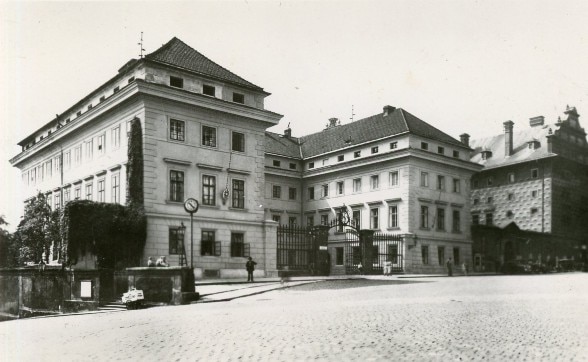The Salm Palace on Hradčanské Square

Switzerland was initially represented in the Czech territory only at the level of an honorary consul. Between 1897 and 1927, three Swiss entrepreneurs held this post.
In 1928, the representation was upgraded to an embassy and the office was located at Divadelní street. In 1934 the Embassy rented premises from the Schwarzenberg family in the Salm Palace (also known as the Small Schwarzenberg Palace) on Hradčanské Square.
The Embassy of Switzerland, including the residence, was located here for several decades. It was allowed to remain here even after the confiscation of the Schwarzenberg property in 1947 and the change of regime in 1948. There were occasional reports in the press that the palaces on Hradčanské Square were to be evacuated and used for museum purposes. This would give the state better control over the area in front of the main entrance to Prague Castle. However, nothing happened for a long time, until all the tenants were given notice in 1977. The fact that Pavel Kohout, a writer and co-author of Charter 77, was also one of the tenants may have played a role. The StB had been following him for several years, and after the international response to Charter 77, the repression was significantly intensified. In his book "Where the Dog is Buried", Pavel Kohout mentions his neighborhood near the Embassy of Switzerland and his friendship with the Swiss Ambassador at the time, Walter Jaeggi. Jaeggi helped him to export his archives abroad.


